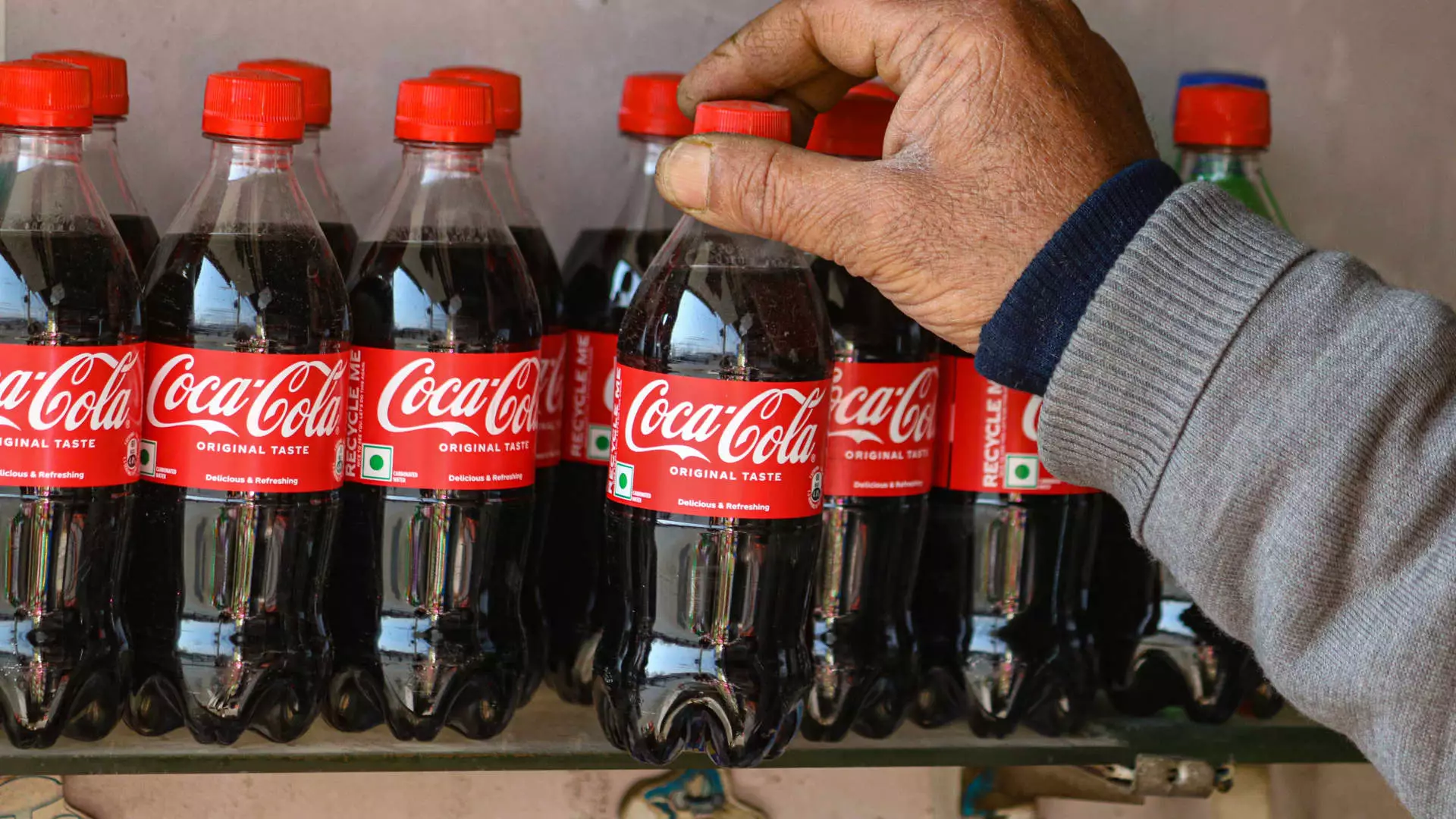In recent months, the beverage giant Coca-Cola has found itself navigating a complex landscape of tariffs and environmental scrutiny. With the U.S. government increasing tariffs on aluminum imports from 10% to 25%, CEO James Quincey indicated a notable shift in the company’s packaging strategy during a recent earnings call. This upheaval not only impacts Coca-Cola’s operational efficiency but also raises significant questions about sustainability and corporate responsibility in a world increasingly aware of environmental issues.
The increasing costs associated with aluminum led Quincey to discuss the possibility of transitioning to PET (polyethylene terephthalate) plastic bottles as an alternative packaging option. He stated, “If one package suffers some increase in input costs, we continue to have other packaging offerings that will allow us to compete in the affordability space.” This remark illuminates a pragmatic approach to cost management, but it also casts a pall on Coca-Cola’s sustainability narrative. PET is lightweight and has its own recycling challenges, contributing to environmental concerns despite being more affordable.
Coca-Cola’s financial resilience amidst tariff-induced cost pressures is noteworthy. Quincey reassured stakeholders that the price increase from aluminum tariffs would not fundamentally compromise the multibillion-dollar operation. He emphasized, “It’s not insignificant, but it’s not going to radically change a multibillion dollar U.S. business,” highlighting the company’s capacity to absorb costs and explore alternative materials. However, this perspective might undervalue the long-term implications of relying more heavily on plastic packaging, especially as consumer preferences shift towards sustainability.
Coca-Cola’s inclination to embrace plastic alternatives poses serious questions regarding its corporate responsibility. The company has previously faced criticism, having been branded as the world’s worst polluter in a Greenpeace report for six consecutive years, primarily due to its excessive single-use plastic production. Although aluminum is generally the more environmentally favorable option due to its recyclability, the stark reality is that Coca-Cola’s commitment to sustainability seems to have wavered, especially given the recent adjustments to its recycling targets. The company’s latest objectives now express a desire to use only 35% to 40% recycled material in packaging by 2035—down from a more ambitious goal of 50% by 2030. Such a shift raises alarms among environmental advocates.
To address the mounting criticism over its plastic usage, Coca-Cola must proactively seek innovative solutions that align economic viability with environmental stewardship. Transitioning to sustainable alternative materials that are biodegradable or can be recycled more effectively may be a strategic pathway to restore public confidence and demonstrate commitment to reducing its footprint. Collaborating with environmental organizations and investing in recycling infrastructure could further enhance their standing.
Furthermore, the company needs to reflect on how it can transform its packaging practices sustainably without sacrificing its market competitiveness—a challenging balancing act in the face of fluctuating costs and consumer advocacy for greener solutions.
Coca-Cola stands at a critical juncture: it can either continue navigating the pitfalls of the tariff landscape while prioritizing cost-cutting measures that may compromise its environmental goals, or it can seize the opportunity to redefine its corporate strategy. By embracing sustainable practices and adjusting its production processes in response to tariffs, Coca-Cola has the potential to emerge as a leader in not just the beverage sector but also in corporate responsibility. The choice they make will undoubtedly shape their future and will resonate throughout the industry.

